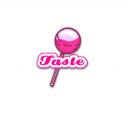Tasting Smell
 As a relatively new wine drinker, I still struggle to decipher the complexities of properly identifying a wine’s aroma and taste, and it feels like a constant battle raging between my conscious and my senses. Is that Soy Sauce? Strawberry? Strawberry jam? Or is it a preserve? What is the difference between a jam and a preserve anyway? Unfortunately, searching out a group consensus only makes matters worse. In my mind there are really three paths down which this conversation can go: 1. Either everyone agrees with your tasting notes, 2. people identify something completely different and you are left feeling inadequate and like black sheep, or 3. you are forced to simply admit that you don’t detect anything at all.
As a relatively new wine drinker, I still struggle to decipher the complexities of properly identifying a wine’s aroma and taste, and it feels like a constant battle raging between my conscious and my senses. Is that Soy Sauce? Strawberry? Strawberry jam? Or is it a preserve? What is the difference between a jam and a preserve anyway? Unfortunately, searching out a group consensus only makes matters worse. In my mind there are really three paths down which this conversation can go: 1. Either everyone agrees with your tasting notes, 2. people identify something completely different and you are left feeling inadequate and like black sheep, or 3. you are forced to simply admit that you don’t detect anything at all.
“It just smells tastes like wine!” We have all heard it and have probably said it too at one time or another in our wine tasting lives. I can remember back to my early tasting days being dumbfounded by people’s ability to identify specific aromas in the wine we were drinking. I would just sit there. Glass in hand. Nose in glass. And I had nothing. “It must be my allergies. Because I really can’t smell anything. But I have always had allergies…does that mean that mean that my sense of smell is defunct? Have I been compromised? Could I be smell blind?” There were even vivid flashbacks to elementary school sex ed. You know, with those crappy early 80’s educational videos where the older brother has to try and explain to the younger brother that masturbation is not only ok but should be performed regularly. The moral of the story–and this does apply to wine–was that yes, everyone is different, but we are all normal.
What I have discovered here is that analyzing the bouquet and deciphering the palette is really about being able to define and classify your perceptions. Just because a wine has raspberries on the palette doesn’t mean that it is going to taste like biting into a raspberry. What experience teaches you is that flavors are really perceived within the sphere of wine; you become familiar with the taste of raspberries in the context of a wine, and thus are able to identify it again and again. I know this sounds elementary and I don’t mean to insult anyone’s intelligence here, but this is an important lesson that many new wine drinkers need to learn.
In his article in The New Yorker (thanks to Alder for this) John Lanchester explains his frustration with understanding a particular quality of a wine but not being able to put forth words to describe it, and the satisfaction he experiences after finally being able to put his finger on it. “Most taste experiences work like that. A taste or a smell can pass you by, unremarked or nearly so, in large part because you don’t have a word for it; then you see the thing and grasp the meaning of a word at the same time, and both your palate and your vocabulary have expanded. One day, you catch the smell of gooseberries from a Sauvignon Blanc, or red currants from a Cabernet, or bubble gum from a Gamay, or horse manure from a Shiraz, and from that point on you know exactly what people mean when they say they detect these things.”
The best way to do this is through experience. As the saying goes: you don’t know until you try. But there are some useful tools. Our slightly more mature friends over at Vinography: A Wine Blog have published a free wallet sized aroma quide that is really helpful in that it lists the most common vocabulary used in describing a wine’s bouquet. And it is wallet sized. This means that those of us that don’t carry murses (man purse) won’t have to worry about wanting to carry it everywhere. The pocket guide is actually based on Ann C. Noble’s Wine Aroma Wheel. Ann invented the wheel when she was a professor of viticulture and oenology at UC Davis. Unfortunately (and despite her extensive education) the wheel doesn’t fit in your pocket. We will actually be doing a comparison of a few tasting tools in the next few weeks so more on that later.
Now some of you may be wondering: Why is there an aroma guide and not a tasting guide. Well our perception of taste is really very much based on our sense of smell. The mouth, and more specifically the tongue, can only actually detect 5 variations of taste: unami, salty, sweet, sour and bitter. So much of our wine tasting conscious actually comes from our dear old nose. So learn to trust yourself. Write down what you experience even if it is only the smell of red wine. Become friends with your senses and you will eventually develop and learn from your experiences. And remember we are always smelling learning.
Tags: drinking, mouth, palette, sense of smell, smell, taste, tasting, wine
1 Comment
Sorry, the comment form is closed at this time.

Amazingly, I own one of those nose pencil sharpeners.
Comment by jasonm1 — March 14, 2008 @ 7:02 pm